Last Updated on October 5, 2022
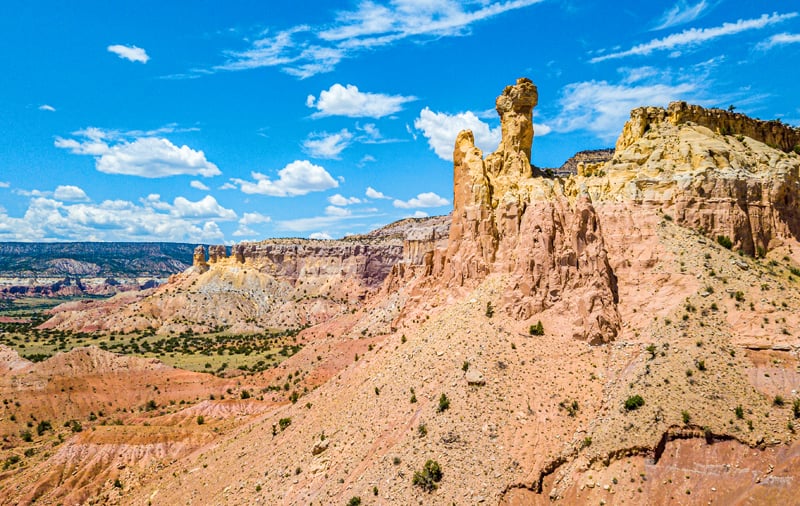
I’d always been drawn to Georgia O’Keeffe’s work, now I was drawn to the land where she lived…
Estimated reading time: 9 minutes
By Tony Tedeschi
Anyone who has taken a flight across America, can’t help but notice how all those green squares across the middle of the country give way to shades of brown as you approach the Rockies. As the flat earth rises into mountains, the terrain displays variations in shape and color, but still betrays a forbidding landscape, begging the question, how could anyone choose to live there?
Nonetheless, for decades, the part of that dry earth in and around Santa Fe, New Mexico, has attracted artists, writers, musicians, jewelry designers and assorted other craftsmen, along with movie stars and a complement of millionaires. I had journeyed here determined to find out why.
From working on my master’s in English Lit I knew D.H. Lawrence also had a ranch in Taos. George R.R. Martin, author of “A Song of Fire and Ice,” adapted for TV’s “Game of Thrones,” lived in Santa Fe.
Acclaimed opera stars also performed at the dramatic, open-air Santa Fe Opera. Ansel Adams shot his famous black-and-white photograph, “Moonrise, Hernandez, New Mexico,” just north of Santa Fe. Georgia O’Keeffe painted hundreds of her works in and around her home in Abiquiu, New Mexico, an hour’s drive north.
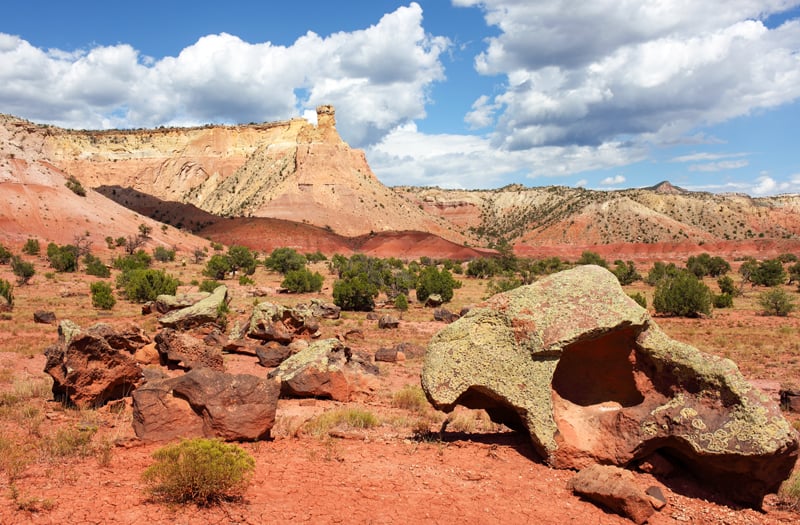
Georgia O’Keeffe: New Mexico’s Lyric Poet
When O’Keeffe died in her 99th, year on March 6, 1986, Edith Evans Asbury wrote in The New York Times: “As an interpreter and manipulator of natural forms, as a strong and individual colorist and as the lyric poet of her beloved New Mexico landscape, she left her mark on the history of American art and made it possible for other women to explore a new gamut of symbolic and ambiguous imagery.”
I was also intrigued by the description of O’Keeffe as the landscape’s lyric poet. Alsoby the comment about the ambiguity of her imagery. It seemed that if you could decipher O’Keeffe, somehow see, even feel, what she saw and felt, you could understand the magic of this place, feel the pulse of the earth here, and also strip away the clutter to its very soul.
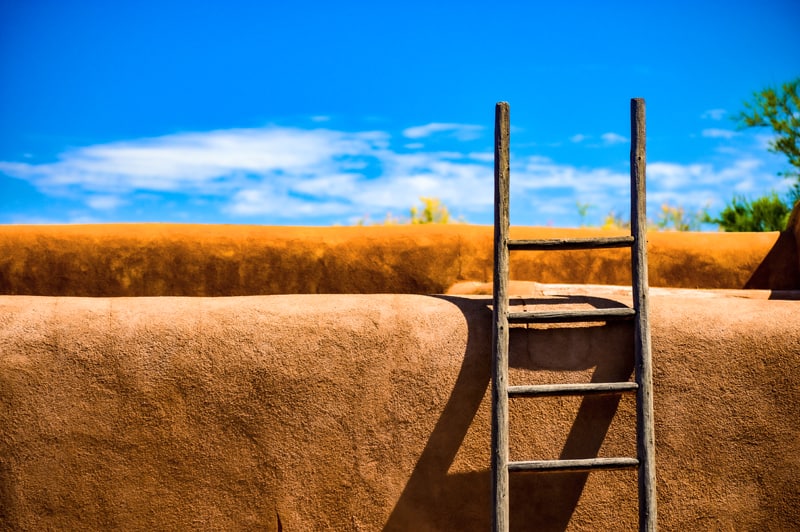
Drawn to O’Keeffe’s Work
Each year, my wife, Candy, a nurse practitioner in women’s health, lends her considerable talents to train medical personnel for the Indian Health Service. I tag along, when I can manage it, this year determined to dig into O’Keeffe, to see and experience Georgia O’Keeffe’s New Mexico.
I’d always been drawn to O’Keeffe’s work, the dominant spirit reflected there, representative of a woman with the courage to live amidst these badlands. Traveling to wherever her spirit points, with O’Keeffe admitting, “I’ve been absolutely terrified every moment of my life and I’ve never let it keep me from doing a single thing that I wanted to do.”
Perhaps there is something in the rich soil of the heartland, places like Sun Prairie, Wisconsin, where O’Keeffe was born in 1887, that infusion of spirit that keeps its offspring pressing toward some sort of ultimate discovery, even if the forward motion occurs while you are, inexplicably, rooted in a place. I knew for O’Keeffe the locus of that world was Abiquiu. But it would require some grounding in the resultant artwork to begin to understand her sense of place.
New Mexico Museum of Art
At the New Mexico Museum of Art in Santa Fe, at fitting place to step into Georgia O’Keeffe’s New Mexico, I was drawn to the similarities of style between O’Keeffe’s work and those of other artists whose paintings hung near hers, concluding that her influence on their work was obvious. But the dates on the paintings of the other artists either preceded O’Keeffe’s arrival in New Mexico or were contemporaneous with her early period there.
Then, why O’Keeffe as lyric poet of this landscape? Was it the volume of her output, hundreds of paintings over many decades? Was it also her status, a result of exhibitions at the prestigious 291 Gallery in Manhattan. There her husband, Alfred Stieglitz, hung her work.
The Georgia O’Keeffe Museum
The Georgia O’Keeffe Museum, a short walk from Museum of Art, would surely provide some direction. Immediately apparent is the boldness of her work, those gaudy colors: pink, beige, salmon, maroon. They are also in the geological layers of the mesas and mountains, a sense that she is trying to penetrate the spirituality beneath a kind of surface tension. In one painting of the flattop mountain opposite her home, “My Front Yard, Summer, 1941,” the mountain seems almost an airship, hovering above a valley dotted with trees. “It’s my private mountain,” she wrote. “It belongs to me. God told me if I painted it enough, I could have it.”
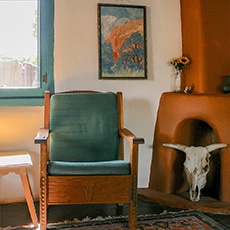
“Easter Sunrise, 1953,” is even more intensely spiritual. Rays of sunlight form a cross above a road that snakes below her home. They go past cottonwoods, whose limbs appear upraised in acknowledgement of the light.
Those cottonwoods were also the subject of numerous paintings. It was indicative of Georgia O’Keeffe’s not having to leave her home to create great art. It took years for her to convince the previous owners – the archdiocese of Santa Fe – to sell her the house. But the inspiration from the location, from the moment she set foot on the property, made her need to live there imperative.
Perceived Sexuality of GeorgiaO’Keeffe’s Work
Where her art has generated recurrent controversy it is in the perceived sexuality depicted in some of her paintings. It’s particularly evident in her treatment of flowers. In paintings like, “White and Blue Flower Shapes, 1919,” there is little imagination required. However, O’Keeffe left such interpretations to observers. They simply, she said “took the time to notice my flowers [and] hung all your own associations with flowers on my flower and you write about my flower as if I think and see what you think and see of the flower – and I don’t.”
For me, such depictions were examples of O’Keeffe trying to bore into the essence of a subject; flowers being something people simply lingered on for a moment, drawn briefly to the color or aroma. Whether it were a mesa or a flower, O’Keeffe sought to see it beyond the reflected light of a simple definition.
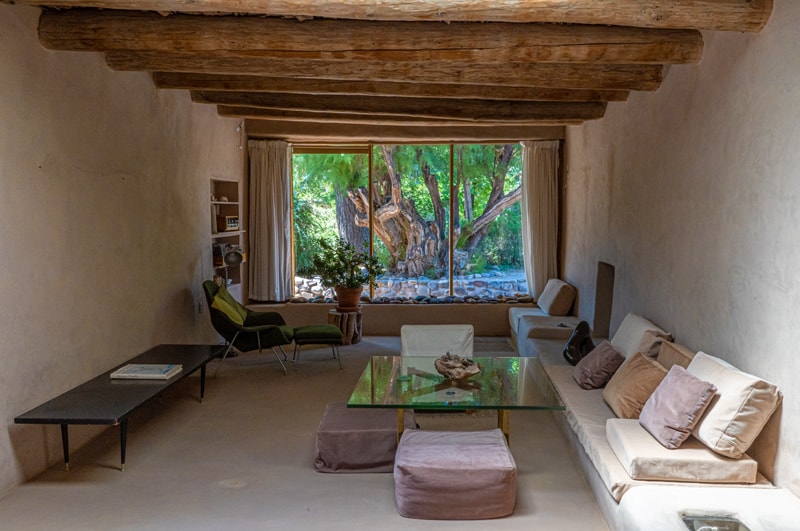
Georgia O’Keeffe’s Home and Studio in Abiquiu, New Mexico
It all demanded a visit to O’Keeffe’s home and studio in Abiquiu, New Mexico. A tour of the grounds reveals a garden where she grew flowers and vegetables There’s also a courtyard where she let ambient light play on the walls. Rooms large and small with divergent design themes. And an expansive studio opening onto a vista depicted in a great deal of her work.
“She would wrap herself in a blanket and wait, shivering in the cold dark of a sunrise to paint,” Asbury wrote in The Times, “would climb a ladder to see the stars from a roof . . .”
In one small room, I also felt the intense sense of an otherworldly connection. Something about the assemblage of elements, the blanched skull with the great antler rack, contrasting the starkly dark wall where it hung, ninety degrees from a weathered exterior door, the cracks in the ancient wood directing shafts of sunlight onto the floor. One of those rare, frozen moments in time. The room, the shafts of light, the sense of time suspended, the frozen moment. Then and there connecting me to O’Keeffe forever.
“When I think of death,” O’Keeffe said, “I only regret that I will not be able to see this beautiful country anymore . . . unless the Indians are right and my spirit will walk here after I’m gone.”
Thoughts of that moment still give me a chill.
You may also enjoy: Santa Fe, A Cultural Mecca / The Top 10 Places in Mexico / Santa Barbara, the American Riviera
If You Go:
New Mexico Museum of Art
107 West Palace Avenue
Santa Fe, NM 87501
Tel: (505) 476-5072
Georgia O’Keeffe Museum
217 Johnson Street
Santa Fe, NM 87501
Tel: (505) 946-1001
Georgia O’Keeffe Home and Studio
P.O. Box 40
Abiquiu, New Mexico 87510
Tel: (505) 946-1098
Santa Fe Convention and Visitors Bureau
201 W Marcy Avenue
Santa Fe, NM 87501
Tel: (505) 955-6200

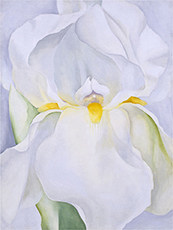
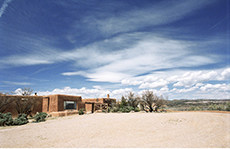
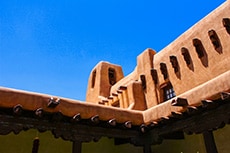
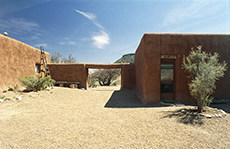
See her work and if you wish form your own thoughts.
Grew up in Abiquiu. My joy as a little girl was watching Georgia O’Keeffe walk the village or hear stories about her from my sisters, and more so from Jackie Suazo. I enjoyed looking at Jackie’s memoirs of his Mother O’Keeffe, as he called her. One day I asked why do you call her like this, so he showed me a copy of a letter she had written to a New Mexico governor wherein she called him her adopted son. We all loved her. She did so much for the village of Abiquiu.
Thank you Flora. That’s a beautiful story.
I don’t believe that your headline picture of a log house has even one stitch of relevance and relationship to the homes she lived in anywhere in NM. And her house on Ghost Ranch property is not this one.
Paul,
Thank you for bringing this to my attention. I’m going to look into it.
Even the O’Keefe has renounced this ridiculous notion of “O’Keefe’s New Mexico.” It wasn’t hers or any white person’s.
I visited her residence at Abiquiu in 2021. I particularly enjoyed seeing the actual landscapes she painted. It gives you some insight into how she envisioned those landscapes – simplifying and coloring them as chose.
Hi Bob,
Thanks for sharing your experience at Abiquiu.
Jim